The End of Evangelion
8.4 /10 1 Votes
8.4/10 MyAnimeList Country Japan | 8.2/10 IMDb 8.4/10 Letterboxd Genre Animation, Action, Drama Duration | |||||||||||||||||||||||||||||||||
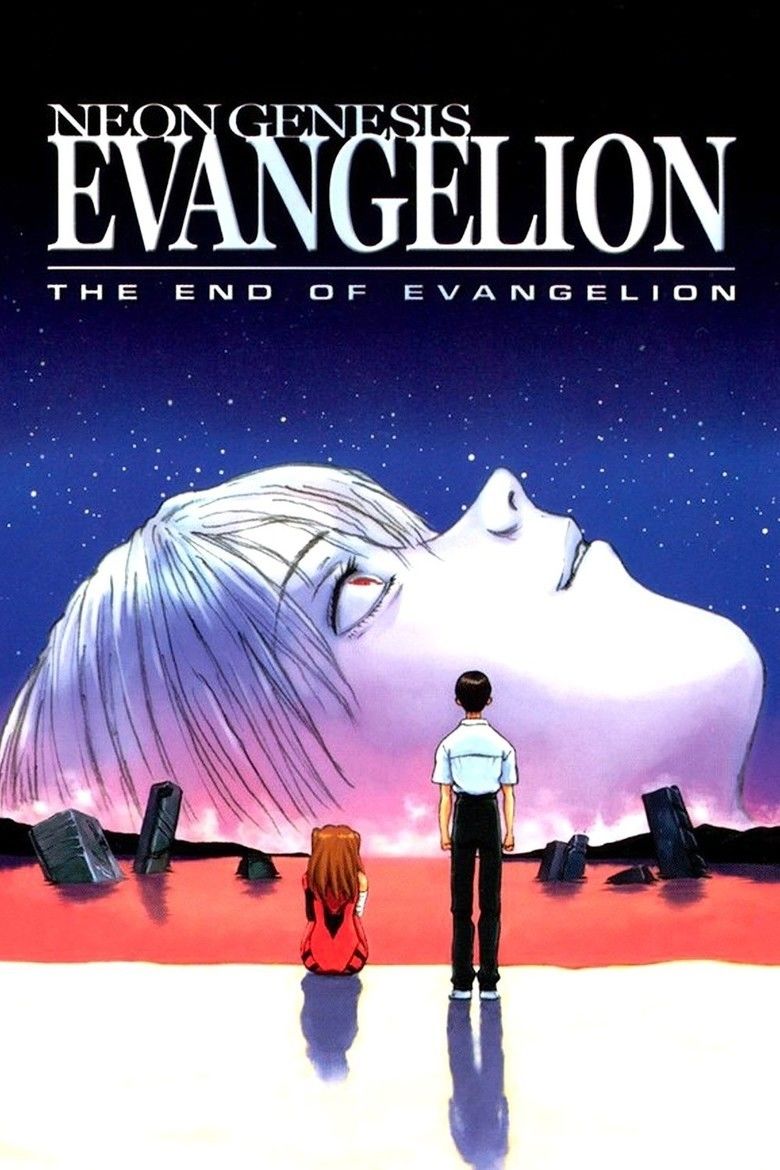 | ||||||||||||||||||||||||||||||||||
Director Hideaki AnnoKazuya Tsurumaki Release date July 19, 1997 (1997-07-19) Featured songs THANATOS - IF I CANT BE YOURS - Characters Shinji Ikari (Megumi Ogata), Asuka Langley Soryu (Yuko Miyamura), Rei Ayanami (Megumi Hayashibara), Kaworu Nagisa (Akira Ishida), Misato Katsuragi (Kotono Mitsuishi) Tagline The fate of destruction is also the joy of rebirth. Similar Neon Genesis Evangelion: Death and Rebirth, Love and Pop, Cutie Honey (film) | ||||||||||||||||||||||||||||||||||
The End of Evangelion (新世紀エヴァンゲリオン劇場版
Contents
- The end of evangelion death and rebirth trailer
- Plot
- Production
- Music
- Interpretation
- Release
- Red Cross Book
- Distribution
- The End of Evangelion Renewal
- Reception
- Legacy
- References
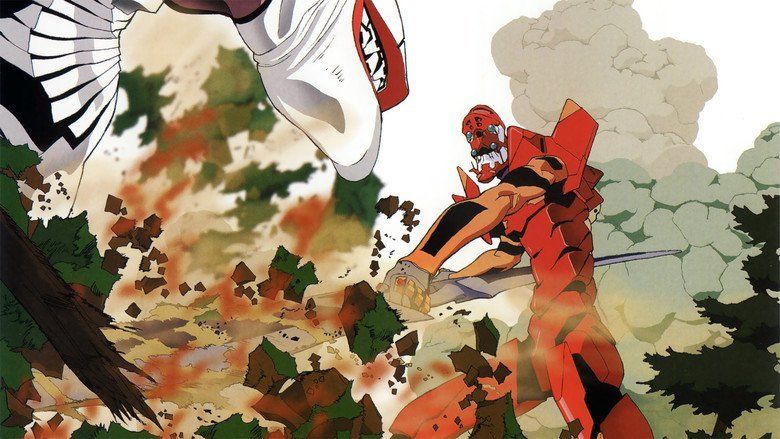
It is divided into two approximately 45-minute episodes, with each episode having alternate English titles just as with the original series: "Episode 25': Air / Love is Destructive" and "Episode 26': Sincerely Yours / ONE MORE FINAL: I need you"..
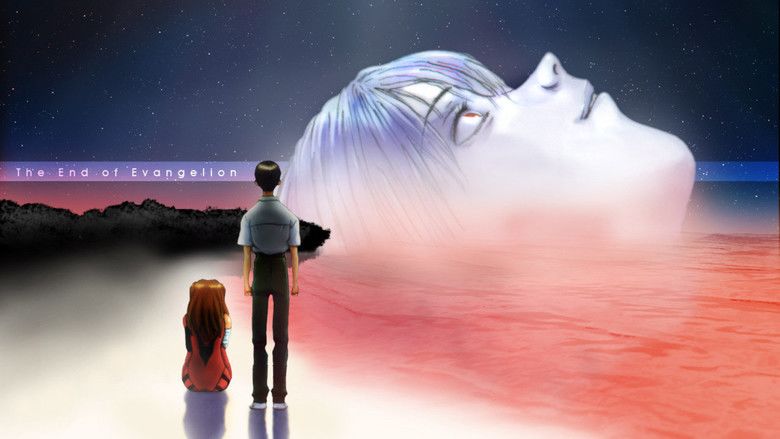
The End of Evangelion initially received mixed reviews, despite obtaining the Animage Anime Grand Prix in 1997 (among other awards). A 2014 Time Out New York poll of filmmakers saw The End of Evangelion voted one of the 100 best animated films of all time.

The end of evangelion death and rebirth trailer
Plot
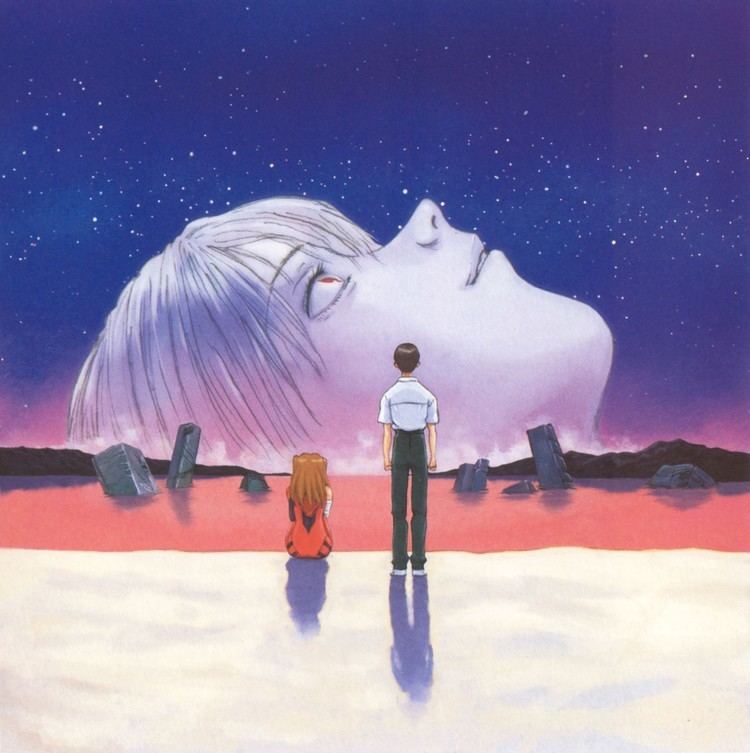
Teenager Shinji Ikari is the pilot of Evangelion Unit 01, one of several giant cyborgs designed to fight hostile supernatural entities called Angels. Distraught over the death of his friend Kaworu Nagisa, Shinji visits fellow pilot Asuka Langley Soryu in a hospital and masturbates to her comatose body.

The shadowy committee SEELE has discovered that commander Gendo Ikari intends to use NERV, the paramilitary organization that deploys the Evangelion units, for his own plans. SEELE dispatches the Japanese Strategic Self-Defense Force (JSSDF) to seize control of NERV, killing most of the staff. NERV major Misato Katsuragi orders Asuka moved to the cockpit of Evangelion Unit 02 and placed at the bottom of a lake, then rescues Shinji from JSSDF troops. Determined to have Shinji defend NERV, Misato brings Shinji to Unit 01's bay doors, but is shot in the process. Before her death, Misato implores Shinji to pilot Unit 01, kisses him, and forces him into the elevator. Shinji discovers Unit 01 immobilized in bakelite.

Concluding that NERV's defeat is inevitable, Gendo retrieves Evangelion pilot Rei Ayanami. He plans to use her to initiate Third Impact, a cataclysm which will kill everyone on Earth, and reunite with his deceased wife Yui. Attempting to stop him, NERV scientist Ritsuko Akagi sends a computer command to destroy NERV. Casper, a computer core modeled on Ritsuko's mother, overrides her command and Gendo kills her.
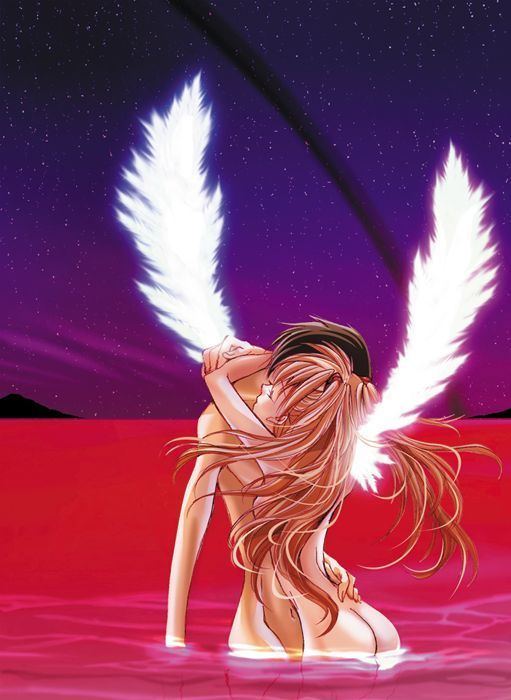
Inside Evangelion Unit 02, Asuka overcomes her trauma and re-activates the unit. She destroys the JSSDF forces, but SEELE's new mass-produced Evangelion units dismember her and Unit 02. Unit 01 breaks free of the bakelite and ascends above NERV headquarters. From the cockpit, Shinji witnesses the mass-produced units carrying the mutilated remains of Unit 02 and screams.

Gendo attempts to merge with Rei, who has the soul of Lilith, an angel hidden beneath NERV headquarters, to begin Third Impact. Having merged with another angel, Adam, Gendo will become a god if he merges with Lilith; however, Rei rejects Gendo, absorbs Adam and reunites with Lilith, and her body grows to gargantuan size. The mass-produced Evangelion units pull Unit 01 into the sky and crucify it, beginning the ritual to initiate Third Impact.
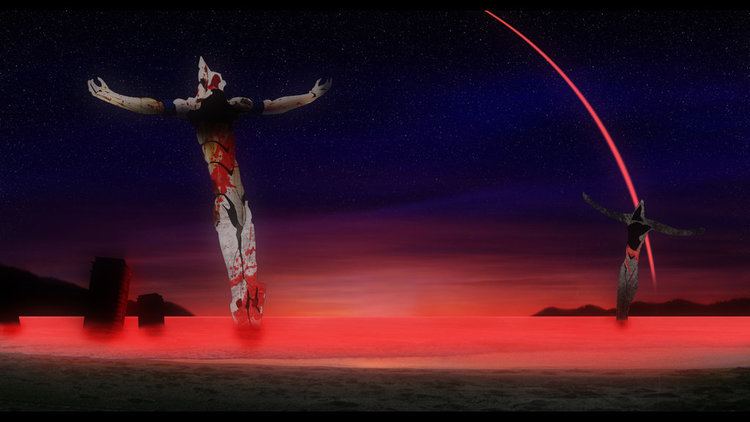
After several dreamlike contemplations, including a fight with Asuka, Shinji decides that he is alone and everyone in the world should die. In response, Rei/Lilith dissolves humanity back into primordial soup, reforming the souls of humanity into a single consciousness. Shinji rejects this new state when he realizes that life is about experiencing joy as well as pain. Rei/Lilith dies and Asuka and Shinji rematerialize in an apocalyptic landscape. Shinji begins to strangle Asuka, but when she caresses his face, he stops and breaks down in tears.
Production
The ambiguous ending of the original Neon Genesis Evangelion series, broadcast in 1995 and 1996, left some viewers and critics confused and unsatisfied. The final two episodes were possibly the most controversial segments of an already controversial series and were received as flawed and incomplete by many. Director Hideaki Anno received death threats from some fans dissatisfied with the ending. However, Anno and assistant director Kazuya Tsurumaki defended the artistic integrity of the finale.
Gainax launched the project to create a film ending for the series in 1997, first releasing Death & Rebirth as a condensed character-based recap and re-edit of the TV series (Death) and the first half of the new ending (Rebirth, which was originally intended to be the full ending, but could not be finished due to budget and time constraints). The project was completed later in the year and released as The End of Evangelion.
Music
Regular series composer Shirō Sagisu scored The End of Evangelion. The film prominently features selections of Johann Sebastian Bach's music throughout the movie. Episode 25' has the Japanese title Air, being named after the Air on the G String which is played during the episode. Among the other pieces included are Cello Suite No. 1 in G Major (I. Prélude), Jesu, Joy of Man's Desiring (transcribed for piano and later played again with string instruments in the end credits), and Pachelbel's Canon.
Among the other insert songs are "Komm, süsser Tod" (Come, Sweet Death), an upbeat song (which appears in the film at the beginning of Instrumentality), "THANATOS -If I Can't Be Yours", which is played in both the end credits and the credits to episode 25' (the song is based around "THANATOS", a background music piece used in the series). Another song, "Everything You've Ever Dreamed", was recorded for the film by the same vocalist (Arianne) as "Komm, süsser Tod", but was not used and was later included on the Refrain of Evangelion soundtrack.
Interpretation
In the final scene of The End of Evangelion, Shinji and Asuka have separated themselves from the collective human existence. Shinji begins strangling Asuka, but when she caresses his face, he stops and breaks down in tears. Asuka then utters the film's last line, "気持ち悪い," which has been variously translated into English as "I feel sick" or "disgusting". The meaning of the scene is obscure and has been controversial.
Release
The End of Evangelion was first released in Japanese theaters on July 19, 1997. Between its release and October 1997, the film grossed 1.45 billion yen. The film was later distributed on Laserdisc in Japan. It also included the first release of the video versions of Episodes 21–24. The film was split up into two 40-minute episodes with brief intros (similar to episode 22), edited credits (for each episode instead of credits for both between the two), redone eyecatcher-textboards (showing "Neon Genesis Evangelion Episode..." instead of "The End of Evangelion Episode...") and a next-episode-preview section in Episode 25'. The episodic version of the film was on the last two discs of the Laserdisc release of the series (Genesis 0:13 and 0:14 respectively), each containing 2 episodes (the original TV episodes and the new End of Evangelion episodes respectively), although the film was also released in its original cinematic form on VHS, Laserdisc, and later DVD. The script was serialized in 4 issues of Dragon Magazine from August 1997 to January 1998. The movie was released on Blu-ray along with Death and Rebirth and the TV series in a box set on August 26, 2015.
In 2006, The End of Evangelion was shown theatrically as part of the Tokyo International Film Festival in Akihabara.
Red Cross Book
The Red Cross Book (as it is unofficially known, for the large red St George's Cross on its cover) was an A-4-sized pamphlet sold in Japanese theaters during the release of The End of Evangelion. The book was written by Gainax and various production staff of the Evangelion TV series and films, with an interview with Tsurumaki, a listing of voice actors and brief essays written by them on their respective characters, short biographical sketches, commentary on the TV series and production of the films, a "Notes" section covering the setting of the films, and a glossary of terms used in the series, Manga, and the two films. The Red Cross Book was left out in the Manga Entertainment release due to copyright issues. However, it was translated by fans of the series.
Distribution
In North America, ADV Films, the license holder and distributor for the Neon Genesis Evangelion TV series, declined to license The End of Evangelion and the associated films, with Manga Entertainment "reportedly [paying] around 2 million dollars" for the rights. Rei Ayanami's English voice actress Amanda Winn Lee wrote the film's script for its English subtitled and dubbed adaptations, and produced and directed the dub. The cast consisted of mostly voice actors reprising their roles from ADV's English adaptation of the TV series, with several supporting roles recast because the original actors were unavailable. To accommodate voice actors living in different parts of the country, the dub was recorded in three locations: Los Angeles, Houston and New York City.
In discussing the film's English dub, Mike Crandol of Anime News Network determined that "the remarkably strong performances of the main cast overshadow the weaker voice work present", though he criticized the script for being "slightly hammy" in parts. Crandol praised the final exchange between Spike Spencer (Shinji) and Allison Keith's (Misato) characters as "one of the most beautiful vocal performances to ever grace an anime".
The End of Evangelion: Renewal
A new version of The End of Evangelion was released on June 25, 2003 in Japan by Starchild and King Records as part of the Renewal of Evangelion box set (which compiled "new digitally remastered versions of the 26 TV show episodes, 4 remade-for-Laserdisc episodes, and 3 theatrical features" as well as "a bonus disc with never-before-seen material").
This version of the film joins the "recap" film Evangelion: Death with End and omits the Rebirth segment from the first film. Also, on the aforementioned bonus disc is a previously unreleased deleted scene shot in live-action with voice actors Megumi Hayashibara, Yūko Miyamura, and Kotono Mitsuishi portraying their characters, 10 years after the events of Evangelion. In this continuity, Shinji does not exist and Asuka has a sexual relationship with Toji Suzuhara. The sequence concludes with a male voice (implied to be Shinji's) saying, "This isn't it, I am not here," proving it is a false reality seen through his eyes. Manga Entertainment announced in 2006 that it was "ironing out the contracts" to release the Renewal versions of Death & Rebirth and The End of Evangelion the next year, though their rights to the film have since expired.
Reception
End of Evangelion won the Animage Anime Grand Prix prize for 1997 and the Japan Academy Prize for "Biggest Public Sensation of the Year" and was given the "Special Audience Choice Award" by the 1997 Animation Kobe. EX.org ranked the film in 1999 as the fifth best 'All-Time Show' (with the TV series at #2).
In Japan, between its release and October 1997, The End of Evangelion grossed 1.45 billion yen. Manga artist Nobuhiro Watsuki wrote:
Newtype USA reviewed the film as a "saga of bamboozlement". It also criticized the film's "more biblical overtones, teen melo-drama and bad parenting" and that "for some frustrated viewers, these DVDs might bring on the '4th impact' hurling these DVDs against the wall." Manga Entertainment CEO Marvin Gleicher criticized the Newtype review as "biased and disrespectful" and a "facile and vapid" product of "ignorance and lack of research".
Many reviews focused on the audio-visual production; Sight and Sound editorialized that "narrative coherence seems a lesser concern to the film-makers than the launching of a sustained audio-visual assault. The kaleidoscopic imagery momentarily topples into live action for the baffling climax...", an assessment echoed by critic Mark Schilling. Mike Crandol of Anime News Network gave the film an overall passing grade and described it as "a visual marvel". He described the DVD release as "a mixed bag", expressing displeasure over the "unremarkable" video presentation and overall lack of extra material. David Uzumeri of ComicsAlliance summarized the film as "a dark, brutal, psychedelic orgy of sex and violence that culminated in the mass extinction of humanity set to an optimistic J-pop song with lyrics about suicide." Uzumeri also stated that the "themes of [Neon Genesis Evangelion] criticizing the audience for being spineless and lost in a fantasy world were cranked up to eleven, as the protagonist Shinji basically watches everybody die around him due to his refusal to make any effort whatsoever to engage with other people."
Legacy
In a 2008 article for Slant Magazine, writer Michael Peterson wrote that "it was not until the End of Evangelion film that Anno's visual strengths as a director really stood out". He observed that "Anno, like David Lynch, possesses a skill at framing his shots, and using the attendant color, to create visual compositions that stand out not only as beautiful in the story's context, but also as individual images, a painterly quality that he then applies back to the work. When Anno frames an image, the power of that specific image becomes a tool that he can later refer back to for an instantaneous emotional and intellectual response."
Carlos Ross of Them Anime Reviews compared the tone of the film to The Blair Witch Project in that it deconstructed the series while "cashing in" on it. He was especially critical of the film's entire second half, saying:
Schilling reviewed the film as more than a deconstruction, but an attempt at unification of mediums:
Chris Beveridge of Mania.com described the film as "work[ing] on so many levels", but cautions that it is not meant to be watched without having seen the rest of the series.
The End of Evangelion is frequently ranked among the greatest anime films. Patrick Macias of TokyoScope ranked it one of his 10 greatest films, and the best anime movie of the 1990s; CUT film magazine ranked it third on its list of the top 30 best anime films.
In 2014, Time Out New York ranked the film at #65 on its list of the top 100 animated movies as voted for by filmmakers. Critic Keith Uhlich described the film as an "immensely satisfying" conclusion to the TV series, the climax as "an end-times free-for-all that mixes Christian symbology, Jewish mysticism, sexual paranoia and teenage angst into a searing apocalyptic stew," filled with "sights and sounds you'll never forget," and Shinji's line, "I'm so fucked up," as the most memorable quote.
References
The End of Evangelion WikipediaThe End of Evangelion IMDbThe End of Evangelion MyAnimeList.netThe End of Evangelion LetterboxdThe End of Evangelion themoviedb.org
